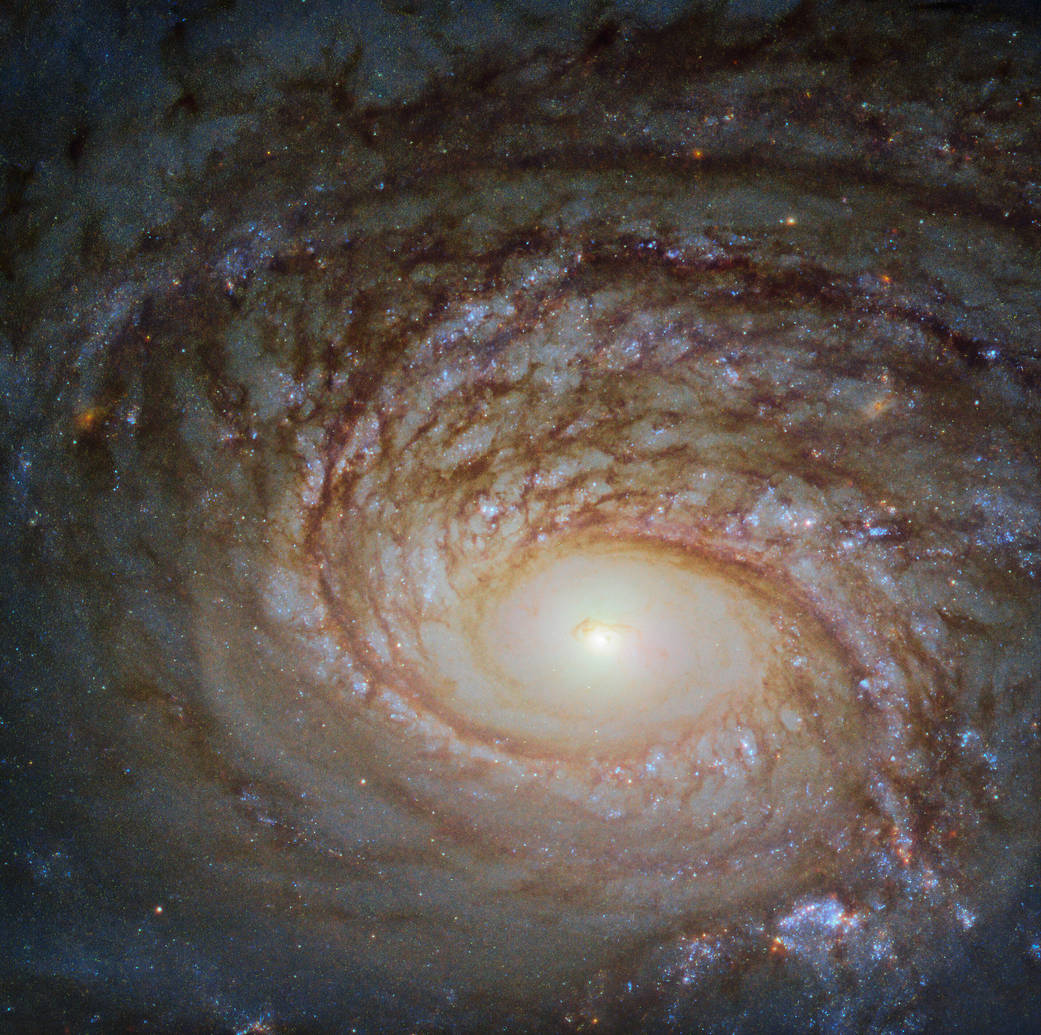The universe is simply so vast that it can be difficult to maintain a sense of scale. Many galaxies we see through telescopes such as the NASA/ESA Hubble Space Telescope, the source of this beautiful image, look relatively similar: spiraling arms, a glowing center, and a mixture of bright specks of star formation and dark ripples of cosmic dust weaving throughout.
This galaxy, a spiral galaxy named NGC 772, is no exception. It actually has much in common with our home galaxy, the Milky Way. Each boasts a few satellite galaxies, small galaxies that closely orbit and are gravitationally bound to their parent galaxies. One of NGC 772’s spiral arms has been distorted and disrupted by one of these satellites (NGC 770 — not visible in the image here), leaving it elongated and asymmetrical.
However, the two are also different in a few key ways. For one, NGC 772 is both a peculiar and an unbarred spiral galaxy; respectively, this means that it is somewhat odd in size, shape or composition, and that it lacks a central feature known as a bar, which we see in many galaxies throughout the cosmos — including the Milky Way. These bars are built of gas and stars, and are thought to funnel and transport material through the galactic core, possibly fueling and igniting various processes such as star formation.
Text credit: ESA (European Space Agency)
Image credit: ESA/Hubble & NASA, A. Seth et al.
宇宙实在太大了,以至于很难维持一种规模感。我们通过望远镜看到的许多星系,例如NASA/ESA的哈勃太空望远镜,这张美丽的图片的来源,看起来比较相似:螺旋臂,发光的中心,恒星形成的明亮斑点和宇宙尘埃的暗波纹交织在一起。
这个名为NGC 772的螺旋星系也不例外。它和我们的银河系有很多相似之处。每个星系都有几个卫星星系,这些小星系与它们的母星系有着紧密的轨道和引力联系。其中一颗NGC 772的旋臂被其中一颗卫星(NGC 770——图片中不可见)扭曲和破坏,使其拉长且不对称。
尽管如此,这两者在一些关键方面还是不同的。首先,NGC 772既是一个奇特的星系,又是一个非棒旋星系;从理论上讲,这意味着它在大小、形状或组成上都有些奇怪,而且它缺少一种被称为“棒”的中心特征,我们在整个宇宙的许多星系中都能看到这种特征——包括银河系。这些棒状中心是由气体和恒星构成的,被认为可以通过星系核心输送和运输物质,可能为恒星形成等各种过程提供燃料和点火。
文字来源: ESA (European Space Agency)
图片来源: ESA/Hubble & NASA, A. Seth et al.







